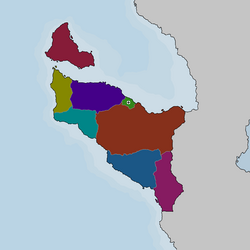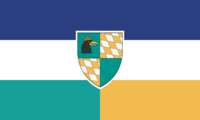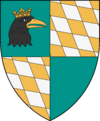Kisanaq: Difference between revisions
No edit summary |
No edit summary |
||
| Line 60: | Line 60: | ||
Kisanaq is a constitutional monarchy and a developed country with an advanced free market high income economy. Its capital and largest city, the Kisanaq City, serves as a financial centre of north Athenia and hosts the headquarters of many multinational corporations. | Kisanaq is a constitutional monarchy and a developed country with an advanced free market high income economy. Its capital and largest city, the Kisanaq City, serves as a financial centre of north Athenia and hosts the headquarters of many multinational corporations. | ||
The country originates from the remote town of the Nbuka Realm, Kisanaq, which became home to the house of Rasmuq in 1203. In 1424, the house gathered enough resources and power to make the whole peninsula an autonomous region. The country, which at that time only contained the city and forests | The country originates from the remote town of the Nbuka Realm, Kisanaq, which became home to the house of Rasmuq in 1203. In 1424, the house gathered enough resources and power to make the whole peninsula an autonomous region. The country, which at that time only contained the city and forests surrounding it, then gained full independence in 1497, after the collapse of the Nbuka Realm. Kisanaq was later colonized by Aftenheim in the 19th century and regained its independence in 1954. | ||
surrounding it, then gained full independence in 1497, after the collapse of the Nbuka Realm. Kisanaq was later colonized by Aftenheim in the | |||
== History == | == History == | ||
| Line 150: | Line 149: | ||
==Economy and Infrastructure== | ==Economy and Infrastructure== | ||
=== Currency=== | === Currency=== | ||
Kisanaq Anatak | |||
===Healthcare=== | ===Healthcare=== | ||
===Transportation=== | ===Transportation=== | ||
Revision as of 20:01, 5 December 2022
This article is incomplete because it is pending further input from participants, or it is a work-in-progress by one author. Please comment on this article's talk page to share your input, comments and questions. Note: To contribute to this article, you may need to seek help from the author(s) of this page. |
Kingdom of Kisanaq Crown Kisanaqa Tanala Hata (Kisanaqese) | |
|---|---|
| Motto: God, Nation, Emperor | |
 Map of Kisanaq | |
 Kisanaq on the globe (green) | |
| Capital | Kisanaq City |
| Official languages | Kisanaq |
| Religion | Misakate |
| Demonym(s) | Kisanaq (noun) Kisanaq (adjective) |
| Government | Unitary parliamentary constitutional monarchy |
• Emperor | Ataraq Maqi |
• Prime Minister | Udila Faron |
| Population | |
• Estimate | 8,678,833 |
| GDP (nominal) | estimate |
• Total | |
• Per capita | |
| HDI | 0.978 very high |
| Currency | Kisanaq Anatak (KIA) |
| Driving side | right |
| Calling code | +101 |
Kisanaq, officially the Kingdom of Kisanaq Crown, is a country in northern Athenia, occupying the small Kisanaq Peninsula and the nearby Taraq Isle. Kisanaq is a constitutional monarchy and a developed country with an advanced free market high income economy. Its capital and largest city, the Kisanaq City, serves as a financial centre of north Athenia and hosts the headquarters of many multinational corporations.
The country originates from the remote town of the Nbuka Realm, Kisanaq, which became home to the house of Rasmuq in 1203. In 1424, the house gathered enough resources and power to make the whole peninsula an autonomous region. The country, which at that time only contained the city and forests surrounding it, then gained full independence in 1497, after the collapse of the Nbuka Realm. Kisanaq was later colonized by Aftenheim in the 19th century and regained its independence in 1954.
History
Prehistory
Nbuka Realm
First Kingdom
Aftenheimish Colony
Kingdom of Kisanaq Crown
Government and Politics
Kisanaq is a unitary constitutional monarchy with a parliamentary system of government, wherein the Emperor of Kisanaq is the head of state and the prime minister is the head of government.
Federal subdivisions
Kisanaq is divided into 8 regions, with the capital of Kisanaq City acting as its own region.
Demographics
Ethnicity
Self-reported ethnic origin in the Kingdom of Kisanaq Crown
Language
Religion
Religious affiliations in the Kingdom of Kisanaq Crown
Education
Largest cities or towns in Kisanaq
Nataki Kisanaqi Statikaq | |||||||||
|---|---|---|---|---|---|---|---|---|---|
| Rank | Region | Pop. | |||||||
| 1 | Kisanaq City | Kisanaq City | 3,043,332 | ||||||
| 2 | Masina | Pakiniq | 377,440 | ||||||
| 3 | Nikakaq | Pakiniq | 294,200 | ||||||
| 4 | Giha | Taqisa | 102,562 | ||||||
| 5 | Hikana | Masa | 100,378 | ||||||
| 6 | Guqati | Taqisa | 93,409 | ||||||
| 7 | Hinaq | Taqisa | 81,754 | ||||||
| 8 | Nima | Pakiniq | 80,003 | ||||||
| 9 | Kisikaq | Katapa | 76,782 | ||||||
| 10 | Naqata | Masa | 63,612 | ||||||
Culture and Society
Education
Attitudes and worldview
Cuisine
Arts and Literature
Sports
Symbols
Economy and Infrastructure
Currency
Kisanaq Anatak

